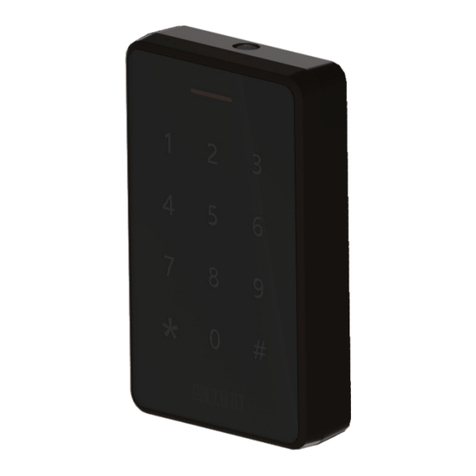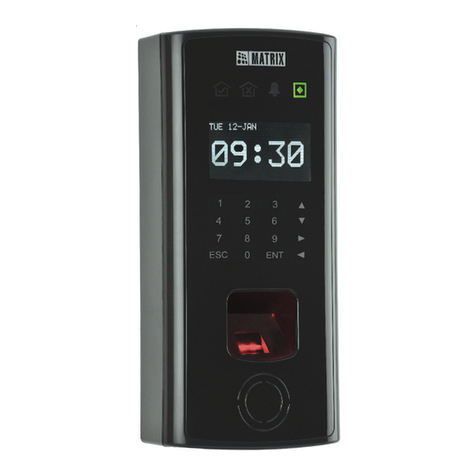
12
11
Ÿ To use the 12VDC of the Door, short the terminals COM (C5-1) and +ve (C5-4)as
shown in figure 5, before connecting the NC/NO and the -ve terminal (C5-5) to the
Door lock.
C5
Door Magnet
12V/24V
Using an External Power Supply
Exit Switch
Ÿ If you are using an exit switch to open the door lock, connect the exit switch cable
(2-pin connector on one end and free on the other) in the 'EXT SW' terminal (C3).
Ÿ To connect a lock of higher capacity using external power supply, connect the
wires as shown in the figure below, considering the technical specifications of the
magnetic lock.
C5
Door Magnet
Using 12VDC of the DOOR
Figure 5
Figure 6
+
-
Auxiliary Input
Ÿ If you are connecting a sensor for detecting alarm conditions, connect the
wire pair from the sensor device to the auxiliary input port 'AUX' (C4).
Auxiliary Output
Ÿ The Auxiliar y output por t can be used for activating alarm devices like
hooter; energize some devices; control annunciation devices.
Ÿ If you are connecting an alarm device like a hooter or an annunciation device,
connect the wires from the alarm devices to the 'AUX RELAY' (C4).
Aux Output Spec:
Exit Reader
Ÿ COSEC DOOR supports external Serial and Wiegand reader.
Ÿ Connect a Serial or a Wiegand reader to the 'EXTERNAL READER' terminal (C2).
WARNING
Do not leave unused wires with stripped ends free. Seal them with insulation tape.
Step 3
Ÿ After you have completed all the electrical connections, lead all the cables through the
rectangular hole into the electrical box recessed in the wall (figure 7).
Ÿ Attach the COSEC DOOR to the mounting plate you fixed on the wall.
[]
If your wiring is not concealed, lead all the cables through the bottom of the device before you
attach it to the Mounting Plate.
Step 5: Mounting the DOOR Controller
Form C SPDT Relay output, max 2A@24VDC





























